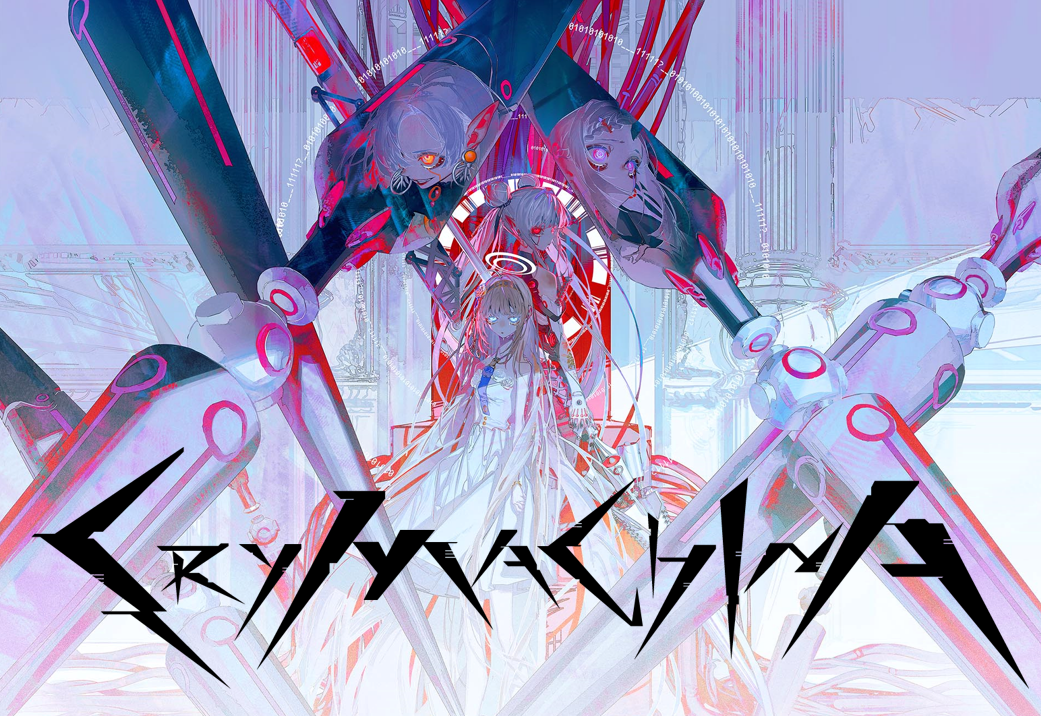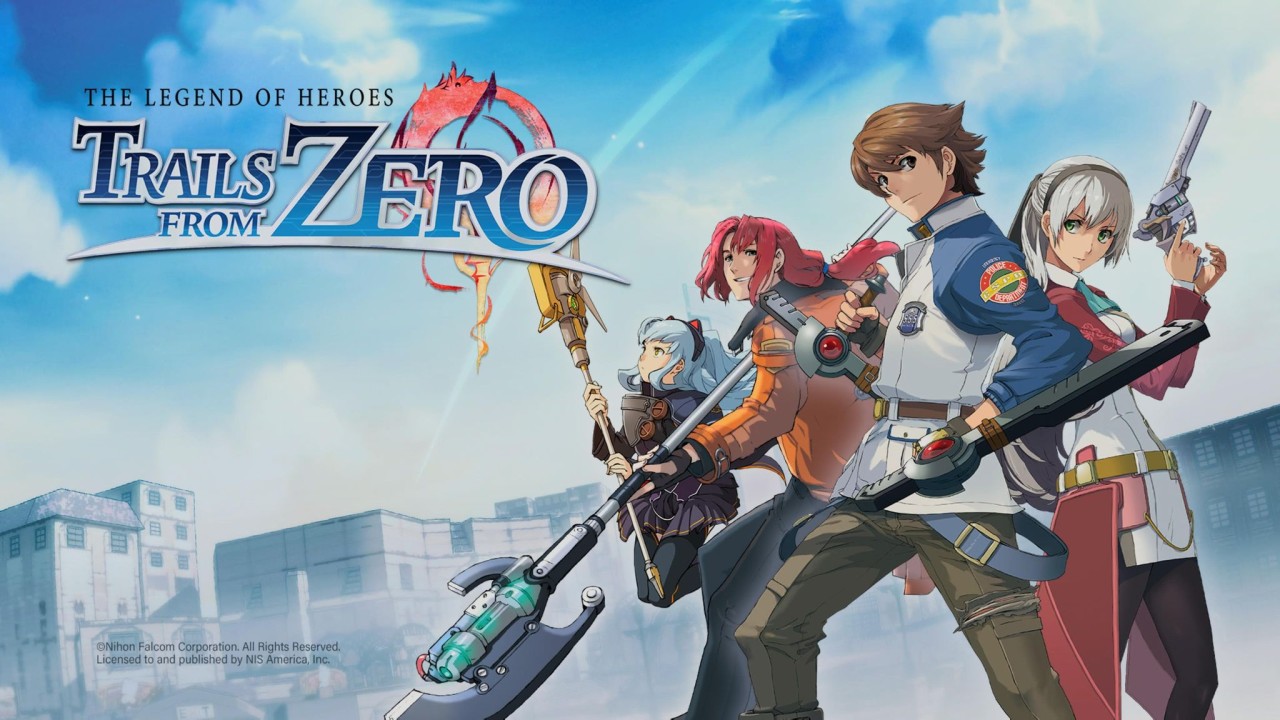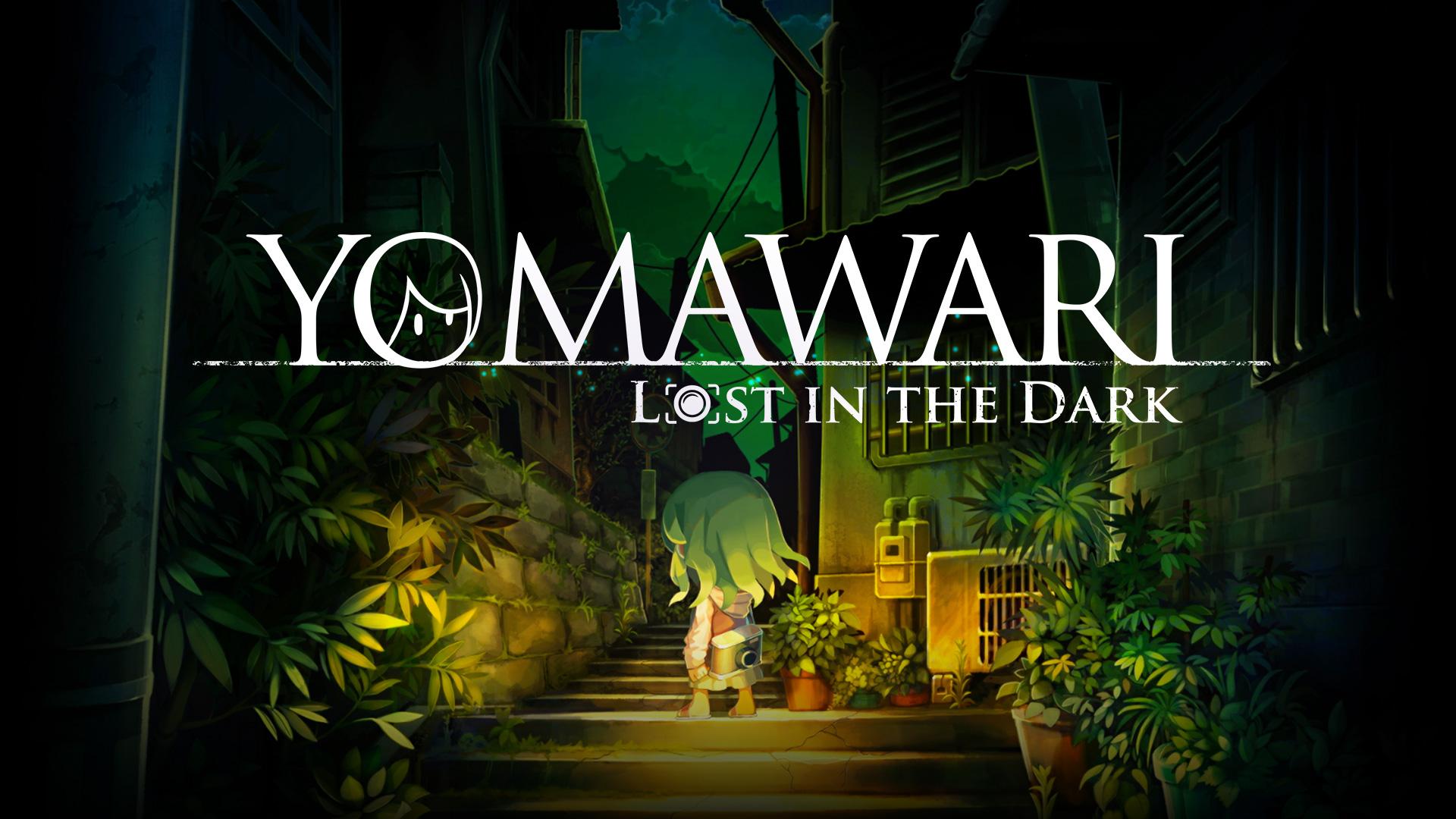Crymachina Review (PS5) – Cry Me a Robot
From the creepy menu screen that mutters to you in high-pitched breathy Japanese, to the existentialism, to the yuri high school girls in the future narrative, Crymachina is a pretty odd game. Take a ten-second look at that trailer, and you will know, to your very core, whether this is a game for you. I know the rest of this review will just be details. There’s just no two ways about it. That style is just too hyper-anime. You’re either really into it (and your games library is full of visual novels, JRPGs, and god forbid, Genshin Impact), or you’re really not (and would never touch it with a ten-foot plushy-tipped barge pole, as my parents used to say).
So from here on out it’s details, because the only people still here really are interested in discovering what Crymachina is, how it plays, and what depths of sassy high-school-girls-in-the-future shenanigans are in store.
It’s Only The End Of Human History. Don’t Let It Concern You
Two thousand years into the future, Leben, a 21st-century high school girl, awakens, her personality uploaded into a synthetic combat android. She’s dead. Long dead. And so is the rest of humanity. So there’s that to deal with. Guided by Enoa, the only sane remainder of an eight-part humanity-regenesis AI system (Horizon-anyone?), also incarnated in the body of a high school girl, Leben and two other awakened androids must take on the other seven parts of the rogue AI, finding portions of humanity data that will slowly allow them to become a Real Human™. After playing Lies of P for two weeks, it sounded decidedly Pinocchio-esque to me.
Crymachina wants to be Neir Automata. Post-apocalypse, flashy combat, auxiliaries flying behind you, and lots of the same existentialism the rotund robots go through in that game. It’s also a high-concept science fiction that in true anime fashion, just so happens to be populated almost exclusively by high-school girls. High-school girls reincarnated in metallic robot bodies that can fight. It’s the ancient magical girl genre anime at its heart, even to the point of having an anime series opening theme to get things started. It’s also a little like The Matrix, as it blithely tells you in the first 30 minutes. End of days, virtual worlds, humanity living as virtual constructs, check. But also Chosen One mythology and programs fighting each other. Leben is Neo and Enoa is Morpheus – she even has lines that sound like him, if Morpheus were a teenage girl.
The rest of the plot is not that much to write home about. There’s a lot of exposition because there are a lot of sci-fi concepts and things with names that need explaining. But for our purposes here, much of it is noise to push you onto the next mission. There are some factions between the other rogue AI and some of them have embarrassingly written reawakened EVE androids girls of their own. There’s a lot of sass and a lot of four girls chatting about stuff between missions. There are a lot of ‘Big Reveals’ where a character’s identity is then suddenly revealed to be something else, but believe me, two minutes later, it makes almost no difference whatsoever to the plot, character, missions, or monotony of the game.
The story is the bulk of what Crymachina wants to deliver, an existentialist tale of what it means to become human. But it fumbles this repeatedly, barely scratches the surface of actual human depth, and comes off clinical and removed. While it engaged at the very start, where confusion and exposition were keeping me going, it quickly lost my interest as the villains and heroes alike were revealed to be paper-thin and the plot devolved into cliché.

This Is Reality, Two Thousand Years After Your Death
Crymachina’s gameplay alternates between two very distinct areas, or modes. There’s the mission mode, out exploring Eden and fighting Cherubim enemies. Then there’s hanging out at the Imitation Garden, literally sitting around and chatting with the girls about some existential nonsense to do with the end of humanity, and then like, which girls they like best, or a pop quiz. The conversations are often banal and often odd, but they felt kind of essential for a while, giving you much-needed context in what is an incredibly confusing world to be dropped into.
However, the missions, which I thought would be a welcome break from all the pseudo-deep talking, were actually the less impressive of the two. Virtually every mission is half a dozen very sharp and nondescript rooms, corridors, and doors in a pretty straight line, a literal handful of enemies, and then a boss. And the next mission is the same, and the next. And the next.
Collecting personality data to restore Enoa’s memory banks, isn’t really personality data at all. When given to Enoa back at the Imitation Garden it transforms into various weapon and equipment upgrades and EGO points. There’s even a seller on the ground during missions, prepared to sell you these random item drops for the same currency as ExP for your skills. It’s odd. Why would I want a sort of gacha element, instead of a weapon and upgrade shop? It feels half-finished in concept. Why would I give this guy my EGO points when I could use them to upgrade my mech girls?
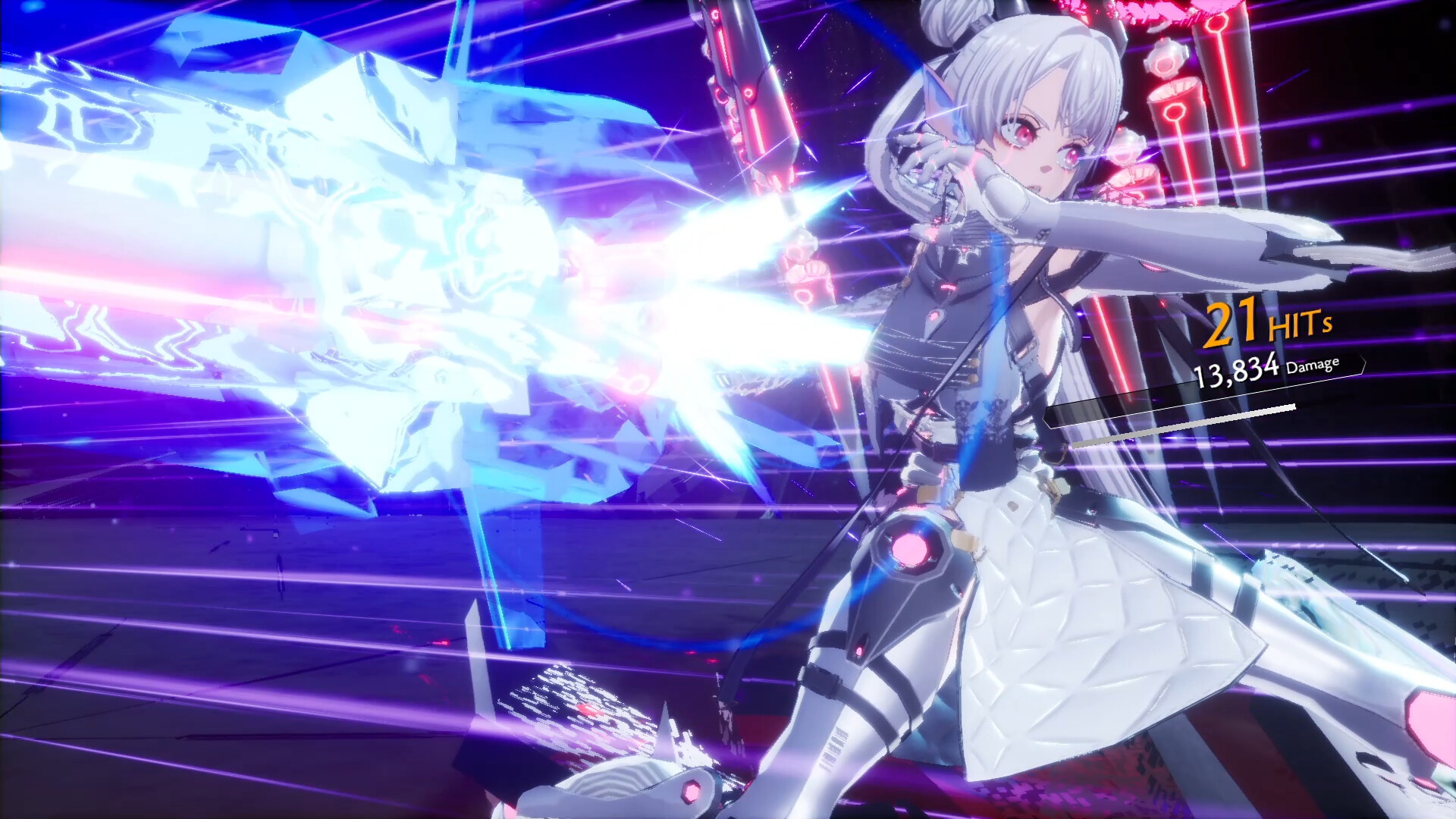
It Would Be Infuriating To Lose A Machine Like You
So there’s not much to the mission structure, but the combat’s cool, right? Well, no, not really. The combat feels very light, like not very impactful. You can spam your way through a lot of the enemies and bosses, throw in a few clicks of your floating backup auxiliary weapons, and the only thing you really need to worry about is an infrequent prompt to dodge or counter. It feels like it could have been much crunchier, meatier combat, with maybe less speed and more to the dodging and parrying.
And I really mean a lot more to them. Currently dodge and parry feel almost unusable, and certainly unreliable. There’s a purple flash that tells you to use your parry/counter, but you can sort of button-bash it and it works. There are so many neon fireworks going on you can barely see your character, so there would be little chance of timing the parry in the frames before a move connected for example, like you might in a souls-like. Hence the big flash of light. The same with the dodge. There’s a flash of red light and it’s time to hit left or right and R2 to dodge. It’s very easy to dodge, but time it just right and you slow down time for your enemy, giving you a good window to button smash some punishment.
So I run down some corridors, I button spam a handful of enemies, and then I hit a difficulty spike that bars the next level and boss. There are level increases and caps throughout the game, and you’ll need to go back and grind a few runs through the same corridors, and then fight the same dull enemies and boss a few times, to build up to the level cap. The level cap is just an arbitrary way to stop you grinding and being too powerful.

Of course, it’s possible to get dramatically better at hitting the perfect counters and dodges, but the system doesn’t demand it. Taking any kind of time or care with the combat mostly results in you being hit by incredibly punishing moves. The system seems to want you to virtually overwhelm your opponent with auxiliaries, combos, and reactions to a few counters and dodges, and not really give them time to do much else. You aren’t really fighting. You’re being rewarded with results for button bashing and overwhelming your opponent.
It’s an odd system that really sucked the fun out of playing the game. I grew tired of the fights because they had no gravity to them, no heft or feel. And then I grew tired knowing I’d probably have to grind through this boss again 3-4 more times, to gain the levels necessary for the next difficulty spike in a few levels time. And the alternative? Go back to the Garden and listen to inane conversation, or tinker with the very minor differences in equipment.
We play games for enjoyment and reward, right? You’ll play any game you’re enjoying, and you’ll play a difficult or hard game if the reward is high. Crymachina really fails to give you much to enjoy about its story or gameplay loop, and rarely if ever rewards you for it. And no, another high school girl chat is not a reward.

Only A Machine
As we get further into this console generation, graphics are becoming increasingly jaw-dropping. One welcome side-effect for me has been the massive upgrade in the quality of anime characters and anime graphics in games. Think Scarlet Nexus in the last year or so, and there are more beautiful anime games on the horizon. Crymachina has some of this quality in its character models, especially in the handful of cinematic cutscenes. The character models are good, and the designs have an absolutely distinct unique quality to them – these incredibly pale shades used and sharp characteristics, and these huge pale eyes that look almost pallid.
However the same can’t be said of the animation. Perhaps in a cost-cutting move, the vast majority of conversations and cutscenes involve pretty static characters, with only very basic movements from the cast. Apart from the eyes and mouth, faces barely move at all. It does end up accentuating the EVE idea – that these girls are mechs – but that argument falls apart when the same lack of animation applies to the Imitation Garden where they are supposedly in their human bodies.
So hyper crisp graphics, over-done character design, and avatars that move less well than a Front Mission mech. Check. There were some designs however that stuck in the craw. For some reason in the far future, AI villains dress in as little as possible, have unfeasibly large breasts, and no waists. Or waists pared down to the backbone only. They look like skeletal sex dolls, not mechs or AI or whatever. Just the strange overly sexualised fantasy of the character designers and 3D artists.
The hyper voice-work and full Japanese voiceover may be good if Japanese is your native language. I lamented not having an English dub to listen to. I really enjoyed the creepy ambient AMSR music throughout the missions and even more so, the couple of anime theme songs with spoken and sung glitchy English lyrics. There’s a pretty interesting soundtrack in Crymachina, just aching to find its audience.
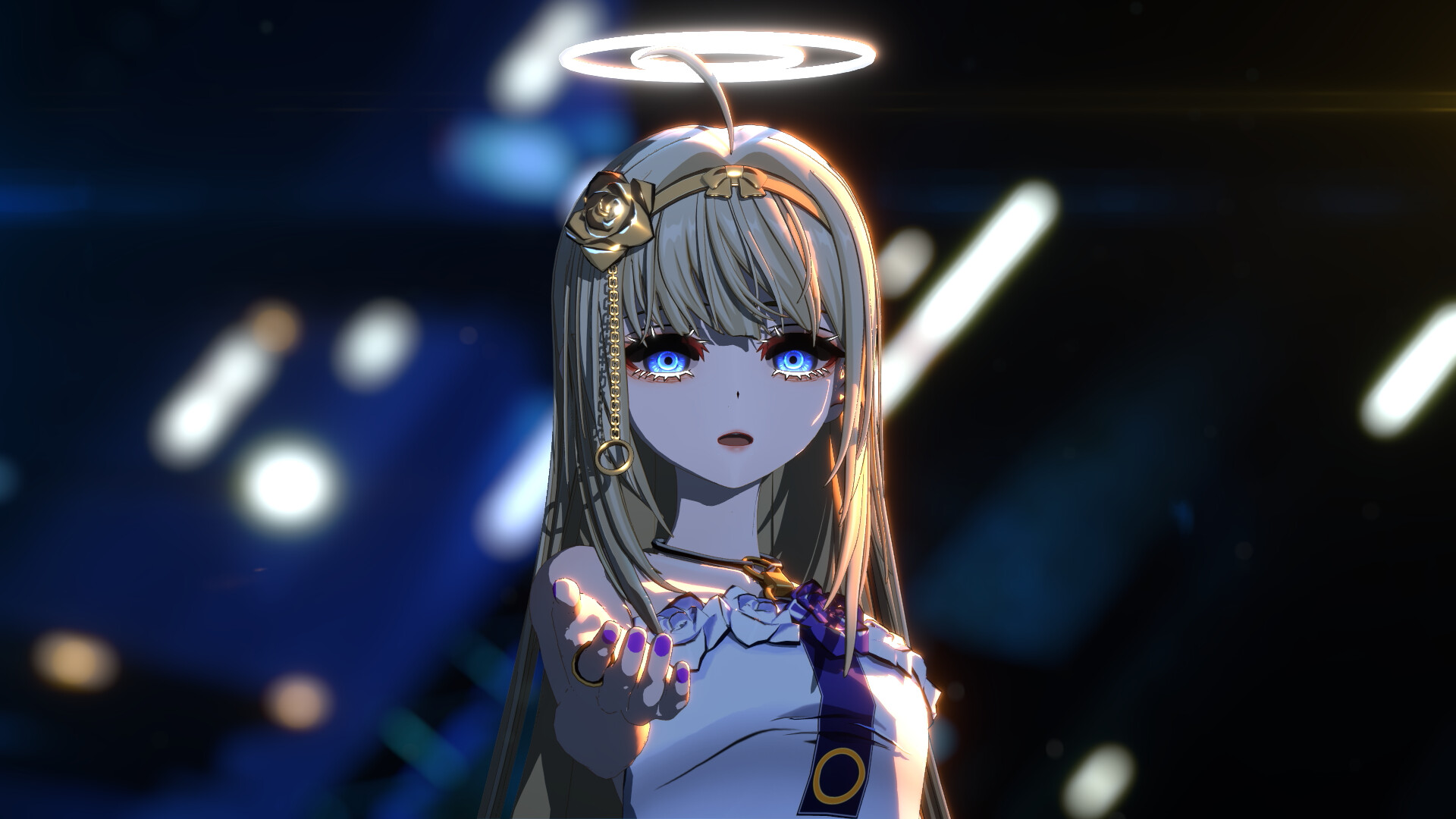
Congratulations On Your Second Life
I am the target market – I like anime video games. I started with the best of intentions – I have praised the graphics, and the attempt at something different, but even with a wealth of goodwill towards it, my patience began to wane around hour three, still knee-deep in dull pointless conversations and combat that felt floaty. There’s only so far into a game I can get before the stakes have to rise above talking about liking cats. There is a humanity-level restoration plot, but you’re never attacked, no one ever has an impetus-style plan of action, and there’s barely any tension in the story anywhere to be found.
By the time a few events did happen, I had lost interest. By the end, I just wanted to move on to a better game. There’s no interesting larger story although it does try to subvert your expectations a few chapters in. There’s a single moment I didn’t see coming, that’s also relatively violent (so, a warning for younger players). But despite this and even beyond it, the story and characters stayed nauseatingly trite, and following a very anime formula, characters suddenly reveal they aren’t who they say they are, even though you had nothing to go on except what you were told by trusted characters.
The other areas of the game felt under-cooked and underwhelming. Combat just doesn’t have the depth and complexity to keep it interesting even for the 12-15 hours the narrative takes to reach the end, and missions are often just straight lines through nondescript corridors.
Neir Automata seems to be what Crymachina is striving for, and kudos for the attempt. However, by shooting so close on themes, combat, narrative, and characters, it ends up suffering so much more by comparison. It doesn’t have the depth that Neir had, it isn’t compelling in the way that game manages. And the combat, though filled with similar moves, combos, and auxiliaries, rarely even attempts Neir’s heights. If it had just done its own thing, it might have stood on its own and scored a little higher.
In reality, Crymachina is a far cry from what it could have been. An overly constrained mission structure of bland corridors, flashy combat that never reaches above button smashing, and a nauseating cliché story that rarely does more than constant exposition, hold back this action RPG from any kind of recommendation.

Crymachina is available now on PlayStation 5 (review platform), PlayStation 4, Nintendo Switch, and PC.
Developer: FuRyu, Aquria
Publisher: FuRyu, NIS America
Disclaimer: In order to complete this review, we were provided with a promotional copy of the game. For our full review policy, please go here.
If you enjoyed this article or any more of our content, please consider our Patreon.
Make sure to follow Finger Guns on our social channels –Twitter, Facebook, Twitch, Spotify or Apple Podcasts – to keep up to date on our news, reviews and features.
